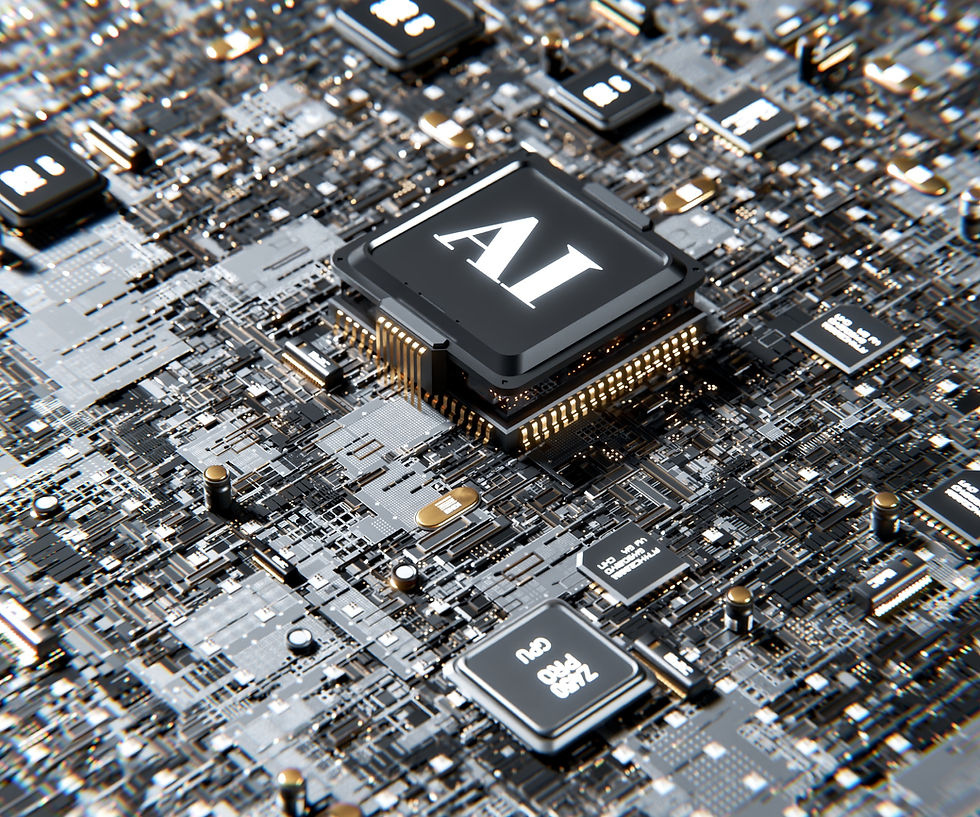Selecting AI Models: Bigger Isn't Always Better
- joshuatkozlowski
- May 28
- 3 min read
Updated: May 29

Artificial Intelligence is rapidly reshaping the business landscape, promising transformative efficiencies, capabilities, and growth. However, the common assumption that the biggest, most powerful AI model is always the best choice can lead businesses (especially small to medium-sized enterprises) down a costly path.
Understanding AI Scaling
AI model capabilities have grown exponentially through a process called "scaling," involving three critical components:
Training Data: AI models improve by identifying patterns in large datasets. Models like GPT-4 have been trained on trillions of tokens, significantly enhancing their capabilities.
Model Size (Parameters): Parameters are internal variables that a model adjusts during training. Larger models can capture more complexity, but this comes with increased computational demands.
Computational Resources (Compute): Advanced models require enormous processing power, rapidly increasing the costs and energy consumption associated with their training and operation.
Initially, scaling up models delivered remarkable breakthroughs. However, we have reached a point of diminishing returns where additional resources yield increasingly marginal performance improvements, especially in complex, multi-step reasoning tasks.
The Car Analogy: Choosing Your AI Vehicle

Consider a cross-country trip analogy: if traveling alone from Toronto to Vancouver with just a small suitcase, a Toyota Corolla would be more efficient and economical than a large Toyota Tundra pickup. This same principle applies directly to AI model deployment.
"Tundra" AI Models: Powerful, large-scale models like GPT-4 or Google's Gemini Ultra are designed for heavy, complex tasks, but their advanced capabilities come with substantial energy and operational costs. These models are ideal only when maximum complexity justifies the higher overhead.
"Corolla" AI Models: Efficient, smaller-scale models such as compact versions of open-source Llama or Mistral are ideal for everyday business tasks like chatbots, summarizing reports, and sentiment analysis. They offer strong performance at significantly lower costs and energy usage.
Why Bigger Isn’t Always Better
Many businesses discover the hard way that marginal gains from choosing oversized AI models often carry hidden or underestimated costs:
Performance and Latency: Larger AI models frequently introduce noticeable response delays, harming user satisfaction and reducing productivity. Metrics like Time To First Token (TTFT) and total generation time become critical considerations.
Energy Consumption: Bigger models demand significantly more energy, increasing both operational expenses and environmental footprints. For example, training GPT-3 emitted as much carbon as 123 cars running for a year.
Financial Costs: Costs escalate dramatically with larger models, encompassing higher API fees, extensive compute resources, and hiring specialized talent to manage these complex systems.
Smart Choices Drive Sustainability, Profitability, and Ethics
Selecting appropriately-sized models not only enhances your ROI but also aligns with sustainable business practices. Smaller, specialized models significantly reduce energy consumption and environmental impact, reflecting positively on your business’s ethical and social responsibility.
Strategic AI Selection: Enhancing User Experience and Operational Efficiency
Optimizing model selection can significantly improve user experiences by reducing latency and enhancing responsiveness. Specialized, smaller models can often outperform larger, more generalized models in niche tasks by delivering quicker and more relevant outputs, thus boosting customer satisfaction and operational efficiency.
Actionable Insights for Your AI Deployment:
Define Your Purpose: Clearly identify the specific business problems your AI solution should address. Craft precise prompts and expected outcomes for clarity.
Explore Model Options: Evaluate the full range of available models, from specialized smaller solutions to powerful large-scale models. Consider models fine-tuned for tasks similar to your requirements.
Pilot Before Scaling: Conduct pilot projects to test different models effectively. Verify their performance meets your needs without incurring excessive overhead.
Assess Total Costs: Include all operational expenses—energy consumption, API usage, infrastructure, talent requirements, and long-term maintenance.
Prioritize "Good Enough": Aim for adequate performance rather than costly perfection. Clearly understand the acceptable error tolerance for your business use-case.
Optimize Smaller Models: Enhance smaller models with fine-tuning, meticulous prompt engineering, and optimization techniques such as quantization and pruning.
Leverage Your Network: Engage with your business network and expert communities for ongoing insights and advice.
Embracing Iterative Adaptation
AI model selection should be iterative rather than linear. Continuously evaluate your choices against evolving business requirements, technological advancements, and market changes. This approach significantly reduces risks, ensuring that your AI strategy remains both efficient and effective as your enterprise grows.
The Bottom Line
Strategic AI model selection is a critical business decision affecting profitability, sustainability, and competitive positioning. At Fifth Wave Solutions, we empower business owners and management to make informed choices, balancing performance, cost, and environmental considerations. By carefully aligning AI capabilities with real business needs, enterprises can responsibly harness AI's transformative potential to drive sustainable and meaningful growth.





Comments